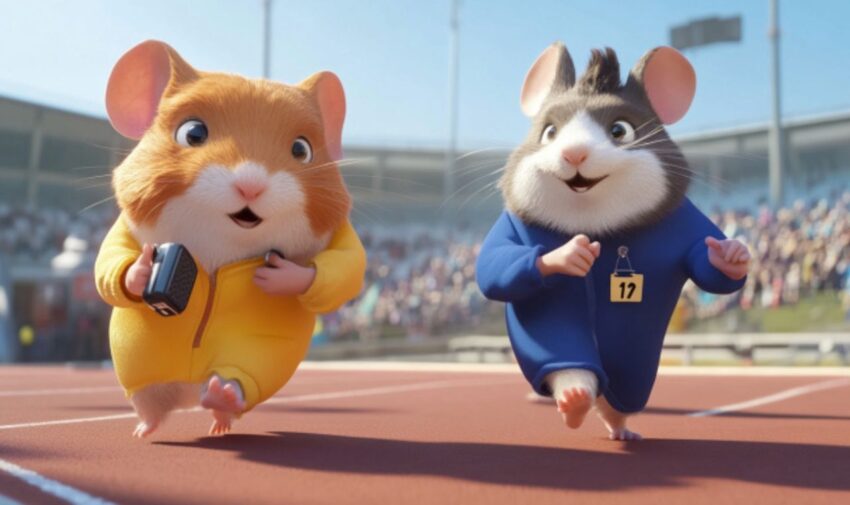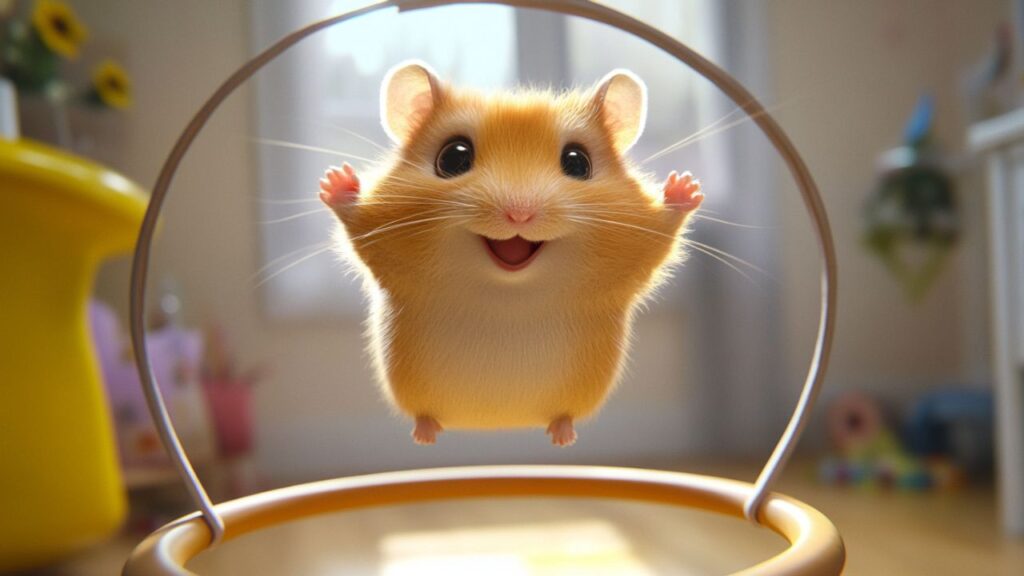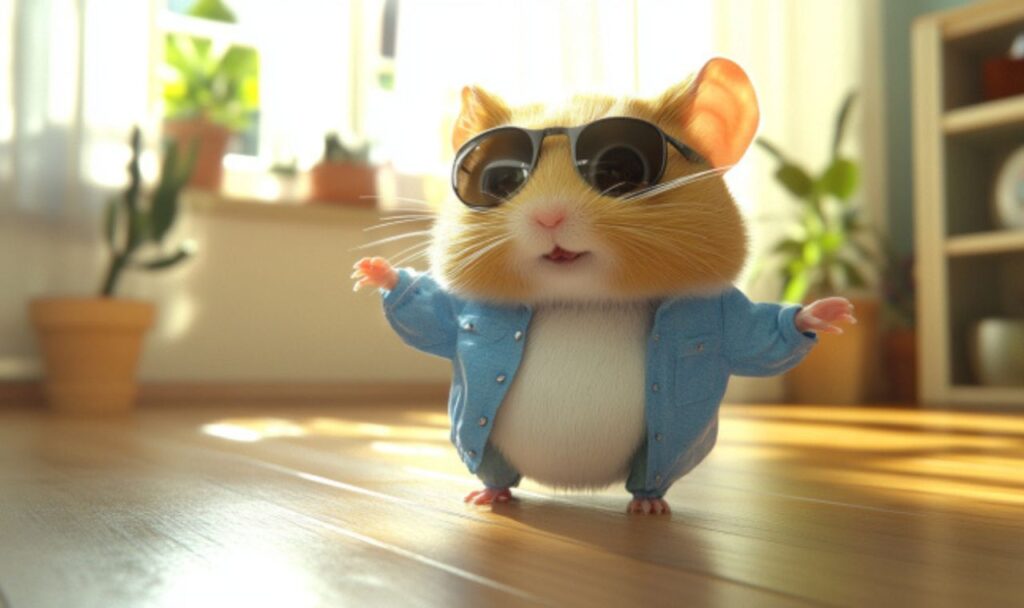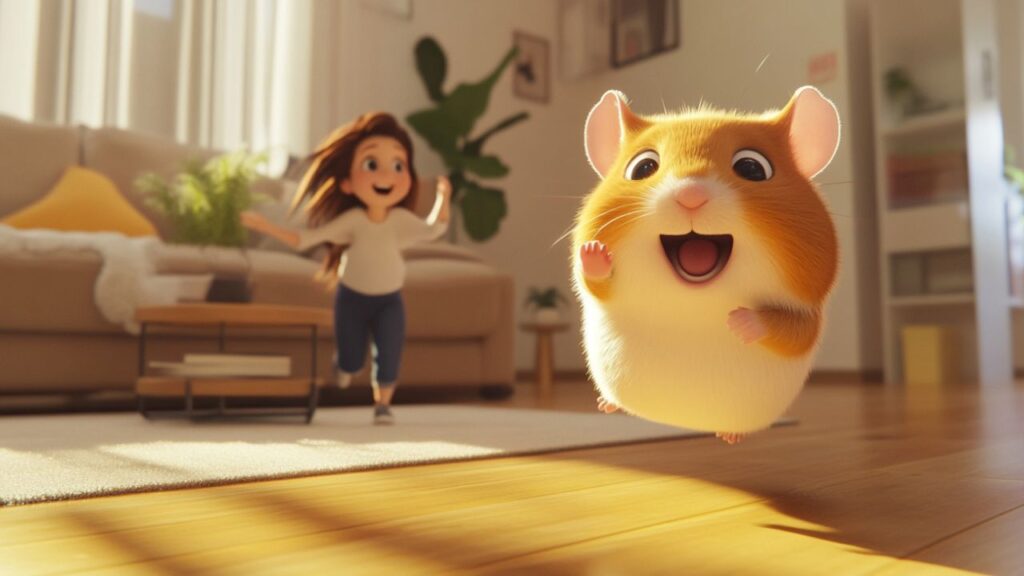When most people think of clicker training, they picture dogs learning tricks or parrots responding to cues. But did you know that clicker training can work wonders with hamsters too? That’s right! Clicker training is a science-backed, positive reinforcement method that’s highly adaptable—even for our tiny, whiskered friends. At its heart, clicker training combines psychology, patience, and a sprinkle of fun, making it an engaging way to interact with your hamster beyond the basics of feeding and cage cleaning.
This method uses a “click” sound to let your hamster know it’s done something right, followed by a tasty reward to reinforce the behavior. Over time, your hamster learns to associate the click with a treat, understanding that certain actions earn them rewards. It may sound fancy, but clicker training is actually simple and enjoyable—and it can completely transform the bond you share with your pet.
Importance of Clicker Training for Hamsters
Why go through the effort of clicker training with a creature as small and seemingly independent as a hamster? The answer lies in the incredible benefits that training offers. Clicker training is not just about teaching cute tricks; it’s a way to enrich your hamster’s life and boost their mental and emotional well-being.
For hamsters, who naturally have high levels of curiosity and energy, clicker training provides an outlet for mental stimulation. Learning new tricks and commands can reduce stress and boredom, which are common issues in small animals that spend much of their lives in enclosures. Additionally, clicker training helps to build trust and a stronger bond between you and your hamster, as it’s rooted in positive reinforcement rather than fear. The process encourages your hamster to see you as a source of fun and rewards, which can make them more comfortable with handling and interaction over time.
Overview of the Article
In this article, we’ll walk you through the essentials of Clicker Training for Hamsters: An Introduction. You’ll learn what clicker training is and why it’s a fantastic choice for your little pet. We’ll guide you through choosing the right tools, preparing your treats, and setting up a training-friendly environment. From there, we’ll dive into the step-by-step process of starting clicker training, including tips for timing the click, building an association, and teaching basic commands.
What is Clicker Training, and Why is it Hamster-Friendly?

Clicker Training Basics
Clicker training is a form of positive reinforcement that uses a “click” sound to mark the exact moment an animal performs a desired behavior, immediately followed by a reward (usually a treat). This technique is rooted in two psychological concepts: positive reinforcement and classical conditioning.
Positive reinforcement means that a behavior is strengthened when it is followed by something enjoyable—like a treat. The more a hamster receives a reward for a specific action, the more likely it is to repeat that action. Classical conditioning, on the other hand, involves creating an association between two stimuli—in this case, the click sound and the reward. When the hamster hears the click and consistently receives a treat right after, it starts to understand that the click means a reward is coming. Over time, the hamster learns that certain actions (like coming when called or standing up) trigger the click, which then brings a treat.
In essence, clicker training allows you to communicate with your hamster in a language it can understand: cause and effect. Unlike verbal praise, which can be confusing for animals that don’t naturally understand human language, the click sound is short, distinctive, and instantly recognizable, making it easy for a hamster to associate with a reward.
Why Clicker Training Works for Hamsters
Hamsters, despite their small size and sometimes solitary nature, are surprisingly receptive to clicker training. Although they’re not traditionally thought of as “trainable” pets, hamsters are curious, intelligent animals with good problem-solving abilities. In the wild, hamsters are constantly foraging, tunneling, and exploring to find food. This instinctive curiosity and drive to find food make them naturally responsive to a reward-based training method like clicker training.
Scientific studies on small mammals, including rodents, have shown that positive reinforcement training can reduce stress, improve memory, and even increase a pet’s confidence in interacting with humans. Clicker training offers mental stimulation and challenges that keep hamsters engaged, which is essential for their well-being, especially in the relatively confined environment of a cage. By providing a hamster with a mentally enriching activity, you’re also helping to prevent common boredom-related behaviors like chewing on cage bars or excessive digging.
One study on behavioral conditioning in rodents highlighted that animals trained with positive reinforcement were more likely to approach humans and show curiosity, rather than fear, in their presence. This aligns perfectly with what many hamster owners observe: hamsters that are clicker-trained tend to be more comfortable around people and more open to being handled, because they associate humans with treats and positive experiences.
Common Misconceptions
Now, you might be wondering: aren’t hamsters too small or independent to be trained? This is one of the most common misconceptions about hamsters and small pets in general. While it’s true that hamsters are less social than animals like dogs or cats, that doesn’t mean they’re untrainable or uninterested in learning. Here’s a closer look at some of the myths surrounding hamster training:
- “Hamsters are too small to train.”
Many people assume that because hamsters are small and have short attention spans, they won’t be able to focus on training. But in reality, a hamster’s size doesn’t impact its ability to learn—if anything, their size makes clicker training even more effective, because the click is such a clear, distinctive sound. By keeping training sessions short and rewarding, you can absolutely hold a hamster’s attention long enough to teach it simple tricks. - “Clicker training is only for dogs or highly intelligent animals.”
Clicker training may have started with dogs, but it’s now used successfully with animals of all sizes and intelligence levels, from cats and parrots to rabbits and, yes, even hamsters. The method works because it taps into an animal’s natural learning process. Hamsters may not be as socially driven as dogs, but their strong association with food rewards makes them excellent candidates for clicker training. - “Hamsters are too independent and won’t respond to training.”
Hamsters are independent, but that doesn’t mean they’re uninterested in interacting with us. Many hamster owners have successfully taught their pets tricks, from simple behaviors like coming to a specific spot for a treat to more complex tricks like running through tunnels on command. These successes show that, with patience and consistency, even hamsters can learn to associate clicks and rewards with specific actions.
For example, some hamster owners have shared videos online of their hamsters responding to commands like “come here” or even following basic obstacle courses. While these hamsters may not perform with the precision of a well-trained dog, they’re clearly responding to the clicker and treats, showing that they’ve learned to understand and enjoy the training process.
Preparing for Clicker Training: Tools and Treats

Choosing the Right Clicker
When starting clicker training with a hamster, selecting the right clicker is key. Clickers come in various designs, and some are more suitable for small animals like hamsters than others. The main factors to consider are volume and size.
Hamsters have sensitive hearing, and a loud, sharp clicker may startle or even scare them, which would defeat the purpose of creating a positive training experience. Look for a clicker with a softer or adjustable sound. Some pet stores sell “quiet clickers” specifically designed for noise-sensitive animals, including small mammals and even birds. These quieter clickers produce a gentler sound that is still distinctive enough for the hamster to hear without being overwhelming.
If you can’t find a quiet clicker, another option is to partially muffle a standard clicker. Try wrapping a layer of fabric or tape around it to dampen the sound. You could also use a small pen with a click top as an alternative if it produces a quieter click.
Beyond volume, it’s helpful to choose a clicker that’s easy to hold and use quickly, especially since training sessions should be brief. Many clickers come with a wrist strap or finger loop, which can make handling easier and allow you to focus on your timing without fumbling.
In a pinch, you could also try using a “tongue click” (a clicking sound made with your mouth) as a marker signal. Just remember that the key to any clicker is consistency—the sound should be distinctive, short, and identical each time to avoid confusing your hamster.
Selecting the Best Treats
Once you have a clicker, the next essential item is a supply of hamster-safe treats. The treats are what make clicker training effective, as they provide the reward that reinforces desired behaviors. The best training treats for hamsters are small, highly motivating, and safe for frequent consumption.
Here are a few guidelines for choosing treats that will keep your hamster interested without causing health issues:
- Small Size: Hamsters have tiny stomachs, so treats should be small enough for them to consume quickly without filling up too fast. You want to keep your hamster’s attention during training without it becoming full or losing interest. Tiny pieces of food, such as a single oat flake or a small seed, are ideal.
- Highly Motivating: Not all treats are equally exciting to a hamster. The treat you use should be something your hamster loves—something it will work for! Common favorites include sunflower seeds, pumpkin seeds, small pieces of fresh fruit (like a sliver of apple or a single blueberry), or even tiny bits of cheese or plain, unsweetened cereal. Just remember to use these sparingly to avoid weight gain.
- Hamster-Safe: It’s crucial to ensure that the treats you’re using are safe for hamsters. Avoid anything too sugary, salty, or fatty, as these can lead to health problems over time. Also steer clear of toxic foods like chocolate, garlic, and onion. Fresh fruits and veggies can be excellent options, but always give small quantities to prevent digestive upset, and avoid anything too watery like cucumber, which can cause diarrhea if overfed.
It’s a good idea to test a few different treats to see what motivates your hamster the most. Some hamsters go wild for sunflower seeds, while others might prefer a little nibble of banana. Try offering a few options outside of training sessions to find out what your hamster responds to best.
Setting the Training Scene
Once you have your clicker and treats ready, it’s time to set up the ideal environment for training. Hamsters are easily startled by new surroundings and loud noises, so creating a calm, controlled environment is essential for successful clicker training. Here are a few tips to create a space that feels safe and distraction-free for your furry friend:
- Choose a Quiet Area: Hamsters are naturally nervous animals, and a loud or busy environment can make it difficult for them to focus. Select a spot in your home that’s quiet and away from heavy foot traffic, other pets, or loud household noises (like the TV or kitchen appliances). This will help your hamster feel more comfortable and make it easier for it to pay attention to the training session.
- Designate a Training Spot: Having a specific area for training can help signal to your hamster that it’s time to focus. For example, you might use a small playpen, a tabletop with a soft cloth or mat for traction, or even a portion of their cage if it’s spacious enough. A designated training spot can help your hamster associate that area with fun and positive experiences.
- Minimize Distractions: Remove anything that might distract or overwhelm your hamster during training. For example, if there are toys, tunnels, or other cage accessories nearby, your hamster might be tempted to run off and play instead of paying attention. Similarly, avoid training sessions immediately after handling or any other stimulating activity, as your hamster might already be tired or overstimulated.
- Use Consistent Timing: Try to train your hamster at a consistent time of day when it’s naturally more active. Hamsters are nocturnal, so they’re often more receptive to interaction in the evening. Training when your hamster is fully awake and alert will make it more likely to engage with you.
- Keep Sessions Short and Positive: Remember that hamsters have short attention spans, so training sessions should be brief—around 5 minutes or less. It’s better to do several short sessions with breaks in between rather than one long session that could cause your hamster to lose interest or become stressed. Always end on a positive note, even if progress is slow. This way, your hamster will look forward to future sessions.
Starting Clicker Training: Building the Association
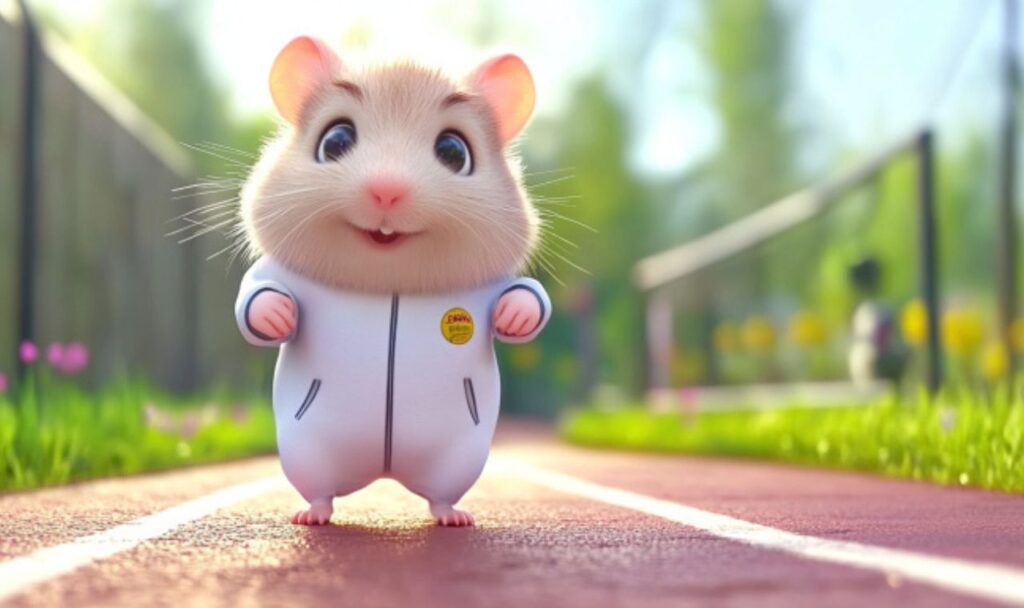
Now that you’ve got your clicker, chosen the right treats, and set up a quiet training space, it’s time to introduce your hamster to clicker training. The first step is to help your hamster make the connection between the sound of the click and a reward. This is called “charging the clicker,” and it’s the foundation of clicker training. Here’s a step-by-step guide on how to start building that association, along with some tips on timing and spotting signs of success.
Introducing the Clicker Sound
The goal here is simple: teach your hamster that the click sound means a treat is coming. This might sound basic, but it’s an essential step. Until your hamster understands that “click = treat,” it won’t know that its actions can lead to that rewarding sound. Here’s how to get started:
- Gather Your Supplies: Have your clicker and a small bowl of hamster-safe treats within easy reach. Make sure the treats are tiny pieces so you can offer multiple rewards without filling up your hamster too quickly.
- Pick a Quiet Moment: Choose a time when your hamster is awake and alert but not overly excited or distracted. Hamsters are usually most receptive in the evening, as they’re naturally nocturnal, so try scheduling training around their peak activity hours.
- Position Yourself Comfortably: Sit close to your hamster, either in its cage or in a designated training area like a small playpen or on a tabletop mat. Keep the treats within reach, but don’t show them to your hamster right away. The idea is to let the click be the “cue” for the treat, not the sight of the food itself.
- Click and Treat: Press the clicker once, creating a single, distinct click sound. Immediately after clicking, give your hamster a treat. The treat should follow the click as quickly as possible, ideally within a second or two, so that your hamster starts to associate the two events as being connected.
- Repeat the Process: Continue this “click and treat” routine about 10-15 times in a row. Keep the rhythm consistent: click, treat, pause, and repeat. Each time, make sure there’s a brief pause between treating and clicking again, so your hamster has a moment to process each click.
- End on a Positive Note: Once you’ve completed a set of clicks and treats, give your hamster a few moments to enjoy its last treat, then gently end the session. Avoid overwhelming it by keeping the initial training sessions very brief, just a few minutes at a time.
Repeat this routine once or twice a day for a few days. It usually doesn’t take long for hamsters to catch on that the click sound means something good is coming their way. After several short sessions, your hamster should start to associate the click with receiving a treat, which is exactly what you want before moving on to more complex training.
Timing the Click Correctly
Timing is absolutely critical in clicker training. In the animal’s mind, the click is a marker for the specific behavior it performed at that moment. If the timing is off, your hamster may not understand what it did to earn the reward, which can lead to confusion and slower progress.
Here are some tips to help you master the timing:
- Click the Instant You See the Behavior: Once you move on to teaching specific behaviors (like coming when called or standing up), click the very moment your hamster performs the action. For example, if you’re training it to come toward you, click the moment it starts moving in your direction.
- Reward Immediately After the Click: The treat doesn’t have to be given at the exact same instant as the click, but it should follow within a second or two. The click tells your hamster “Yes, that was right,” while the treat reinforces that it made the right choice.
- Avoid “Late Clicks”: If you click too late, your hamster may think it’s being rewarded for something else entirely. For example, if you want to reward your hamster for standing up but you click after it’s already come back down, it may think the reward was for coming down instead. Precision matters, especially with small animals that have quick, subtle movements.
- Practice Your Timing: Don’t worry if your timing isn’t perfect right away—it’s a skill that improves with practice. If you’re struggling to click at the right moment, try practicing with a friend or inanimate object first. For example, imagine you’re “training” a pen to stand upright. Click each time the pen “stands up” and then follow with a pretend treat. This practice can help improve your timing without the pressure of a live animal in the mix.
Good timing is what makes clicker training effective, so take your time to get comfortable with it. Once you and your hamster both understand the clicker’s role, you’re well on your way to smooth, effective training.
Signs of Success
How do you know when your hamster is starting to understand the clicker? Look for these telltale signs that your hamster has made the connection between the click and the reward:
- Looking Toward You When It Hears the Click: One of the clearest signs of success is when your hamster starts looking at you expectantly right after it hears the click sound. This shows that it understands the click means a treat is coming, and it’s eagerly waiting for its reward.
- Approaching You When You Click: Some hamsters will even begin to approach you when they hear the clicker, expecting a treat. This behavior shows that your hamster sees the click as a positive signal, which is exactly the association you want.
- Increased Focus During Training Sessions: If your hamster seems more engaged and attentive as soon as it hears the clicker, it’s a sign that it’s learning the click-reward pattern. You might notice it becoming more alert, standing up, or even sniffing around for the treat when it hears the click.
- Performing Actions Repeatedly: Once your hamster understands the clicker, it may start repeating behaviors that previously earned a click and treat. For example, if you clicked and treated it for standing up, it might try standing up again to see if it will earn another click. This shows that your hamster is beginning to understand how clicker training works and is experimenting with its own actions to earn rewards.
If you see these signs, congratulations! Your hamster has successfully “charged” the clicker and is ready to start learning specific tricks and behaviors. This foundational step is essential for moving on to more advanced training, as your hamster now understands that its actions can lead to a click, and a click means a treat is on the way.
Remember, patience is key. Some hamsters will catch on right away, while others may need a few extra sessions to fully understand the clicker’s meaning. Keep sessions short and positive, and always end on a high note. Once your hamster consistently responds to the click, you’re ready to start training it to perform specific actions and behaviors.
Teaching Basic Commands with Clicker Training
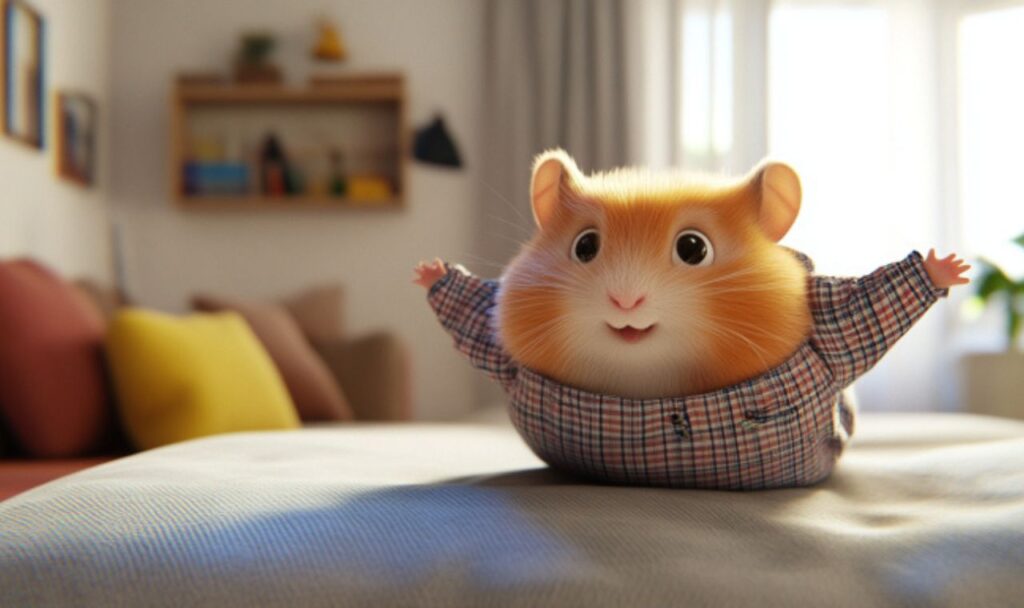
Now that your hamster has learned to associate the click sound with a treat, you’re ready to start teaching some basic commands. These simple tricks are not only fun to watch but also help build trust between you and your hamster. Here, I’ll walk you through three beginner-friendly commands: “Come Here”, “Stand Up”, and “Enter/Exit the Cage”. Each command builds on your hamster’s understanding of the clicker and encourages it to respond to specific cues.
‘Come Here’ Command
Teaching your hamster to come when called is a great foundation trick. It reinforces your bond and can be very useful for daily handling or during playtime outside of the cage.
- Choose Your Cue Word: Start by choosing a simple cue word, like “come” or “here.” Be consistent with this word throughout training so your hamster learns to recognize it as the signal to come toward you.
- Position Yourself in Front of Your Hamster: Sit a short distance away from your hamster in a quiet training area. You don’t want to start too far away, as this could confuse or overwhelm your hamster. A distance of 6-12 inches is usually a good starting point.
- Hold Out a Treat as a Lure: Show your hamster a treat to catch its attention. Hold the treat in your hand, close to the ground, so your hamster has to move toward you to get it.
- Use the Cue Word and Click as It Moves Toward You: Say your chosen cue word (“come” or “here”) in a soft, friendly tone, and wait for your hamster to take a step in your direction. The moment it starts to move toward you, click the clicker and then give it the treat. This marks the behavior of coming toward you as a “good” action that’s worth a reward.
- Repeat and Gradually Increase Distance: Repeat this process several times during short training sessions. Over time, your hamster should start associating the cue word with moving toward you. As it becomes more reliable, try increasing the distance by a few inches each session. Eventually, you’ll be able to call your hamster from across the training area or even from inside its cage.
- Fade Out the Lure: Once your hamster consistently comes to you with just the cue word, you can start to phase out the lure (the visible treat in your hand). Call your hamster without showing the treat, but still give it a reward when it comes to you. This helps the hamster learn to respond to the cue without needing to see a treat every time.
With a bit of patience, your hamster will start to come toward you whenever it hears the cue, even without a visible treat. Remember to keep sessions short and end on a positive note!
‘Stand Up’ Command
“Stand Up” is a classic hamster trick that’s easy to teach and adorable to watch. This trick plays into your hamster’s natural behavior—many hamsters will stand on their hind legs out of curiosity—so it’s a simple behavior to capture and reinforce.
- Get Your Hamster’s Attention with a Treat: Hold a treat just above your hamster’s head, within reach but high enough that it has to stretch or stand up to investigate.
- Use the Cue Word and Wait for It to Stand: Choose a cue word, like “stand” or “up.” Say the cue word as you hold the treat over its head. Your hamster will likely stand up to try to reach the treat. As soon as it does, click the clicker to mark the behavior, then give it the treat as a reward.
- Repeat the Process: Practice this several times in a session. Each time your hamster stands up, say the cue word, click, and reward. This repetition helps it learn that “standing up” leads to a click and treat.
- Gradually Remove the Treat Lure: After a few successful rounds, try saying the cue word without holding the treat directly over its head. If your hamster stands up in response to the cue alone, click and give it a treat from your other hand. This teaches your hamster to respond to the verbal cue without needing to see the treat first.
- Reinforce and Practice Regularly: Continue practicing the “Stand Up” command regularly, but keep sessions short and fun. Hamsters have short attention spans, so it’s better to do a few successful stands and then take a break.
Once your hamster has mastered “Stand Up,” you can even add variations, like holding the stand for a second or two before rewarding. This trick is a fun, easy way to get your hamster engaged and active.
‘Enter/Exit the Cage’ Command
Teaching your hamster to enter and exit its cage on command can be incredibly helpful for handling and makes daily care smoother. This trick helps your hamster feel more comfortable with going in and out of its cage and reduces the need to “catch” or grab it, which can be stressful for some hamsters.
Training ‘Exit the Cage’
- Open the Cage Door and Use a Treat as a Lure: Open the cage door and hold a treat just outside the opening. Let your hamster see the treat, and use a gentle cue word like “out” or “come out.”
- Click and Reward When It Moves Toward the Treat: As your hamster approaches the treat and starts to step out of the cage, click the clicker and give it the treat outside the cage. This reinforces the behavior of leaving the cage when you give the cue.
- Repeat and Reinforce: Repeat this process several times. Each time, use the cue word, and click and reward as your hamster moves out of the cage. Gradually, it will start to associate the cue with exiting.
- Add Distance: Once your hamster reliably exits the cage, you can start giving the cue from a little farther away, encouraging it to leave the cage and come to you for a treat. This builds confidence and makes the process of exiting the cage smoother and less stressful for both of you.
Training ‘Enter the Cage’
- Guide Your Hamster to the Cage Door with a Treat: When it’s time for your hamster to go back into the cage, hold a treat at the entrance to lure it toward the door. Use a cue like “in” or “go home” as you guide it toward the entrance.
- Click and Reward When It Enters the Cage: As soon as your hamster moves into the cage, click the clicker and give it the treat inside the cage. This reinforces the idea that going into the cage is a positive action that earns a reward.
- Repeat the Process Until It Understands the Cue: With consistent practice, your hamster will learn that “in” or “go home” means it should enter its cage. Eventually, you’ll be able to guide it back into the cage with just the cue and a click.
- Fade Out the Treat Lure: Once your hamster understands the command, start fading out the visible treat. Use the cue word, wait for it to enter the cage, then click and give a treat from your other hand. This helps your hamster learn to go into the cage without needing to see the treat as a prompt.
With enough practice, your hamster will respond to both “Exit” and “Enter” cues, making it easier to take it out for playtime and return it to its home without stress.
Hannah’s Training Tactics: Quick Tips for Clicker Training Success
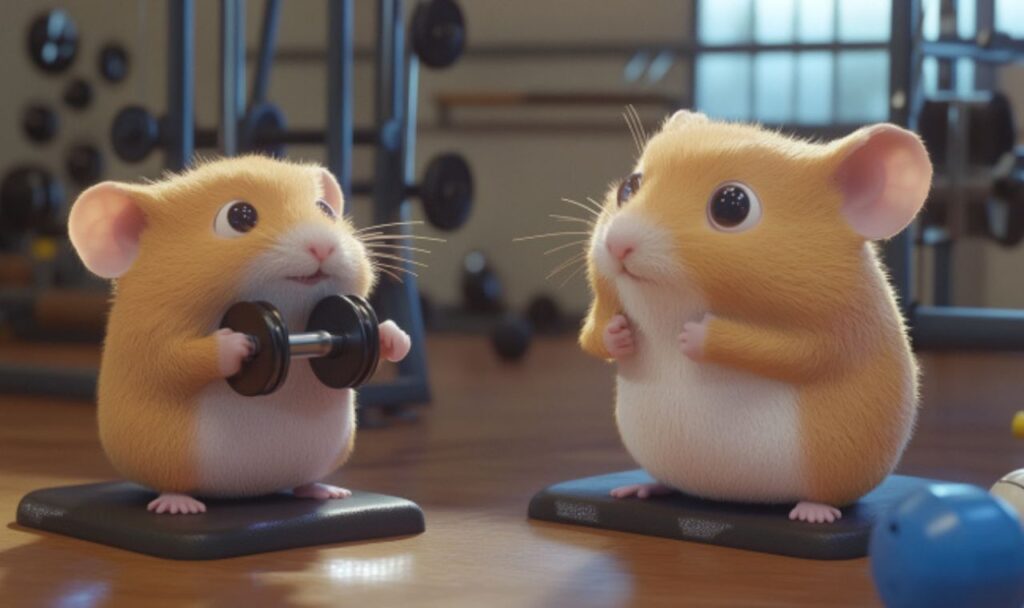
To wrap up our clicker training journey, here are a few quick tips that will set you and your hamster up for success. Training a hamster requires patience, consistency, and a whole lot of positive energy. These tips will help you make each session rewarding for your little friend, even when things don’t go exactly as planned.
Tip #1: Always End Sessions on a Positive Note
One of the golden rules of training animals—especially small, sensitive ones like hamsters—is to always end each session on a positive note. This means wrapping up with a behavior that your hamster can succeed at, even if it’s something as simple as coming over to take a treat from you.
Why is this important? Ending on a high note ensures that your hamster finishes the session with a positive feeling, looking forward to the next training time instead of feeling frustrated or confused. If a particular trick or behavior isn’t coming together, don’t push it. Instead, reward a simpler action and give your hamster a treat to end things on a high.
For example, let’s say you’re working on the “Come Here” command, but your hamster seems distracted or not particularly responsive that day. Rather than trying to force it to follow the command, just click and reward any small sign of engagement—like if it glances toward you or takes a step in your direction. This way, you end with something positive, helping to keep your hamster motivated and willing to train again next time.
Tip #2: Be Patient and Consistent
Hamsters are quick learners, but they need consistency to fully understand what you’re asking of them. Training is all about building patterns and associations, so the more consistent you are, the faster your hamster will catch on. Try to train around the same time each day, keep your cues and commands the same, and remember to always follow up a click with a treat.
Patience is key here. Some hamsters will pick up clicker training within a few sessions, while others may take a bit longer. Just like people, every hamster has its own learning speed and personality quirks. Avoid getting frustrated if progress seems slow—your hamster can sense your emotions, and stress might make it hesitant to engage. Take a deep breath, go at your hamster’s pace, and remember that every tiny step forward is progress.
If you’re feeling impatient, think of each training session as a bonding moment rather than a “lesson.” Even if your hamster doesn’t perform perfectly, every time you sit together, click, and offer treats, you’re building trust and strengthening your connection. Over time, that relationship will make your hamster more eager to learn.
Tip #3: Celebrate Small Wins!
When it comes to hamster training, small wins are big victories! Even something as simple as responding to the clicker for the first time is a huge step for your tiny friend. Recognize and celebrate these little milestones—they’re the building blocks for bigger achievements.
Conclusion
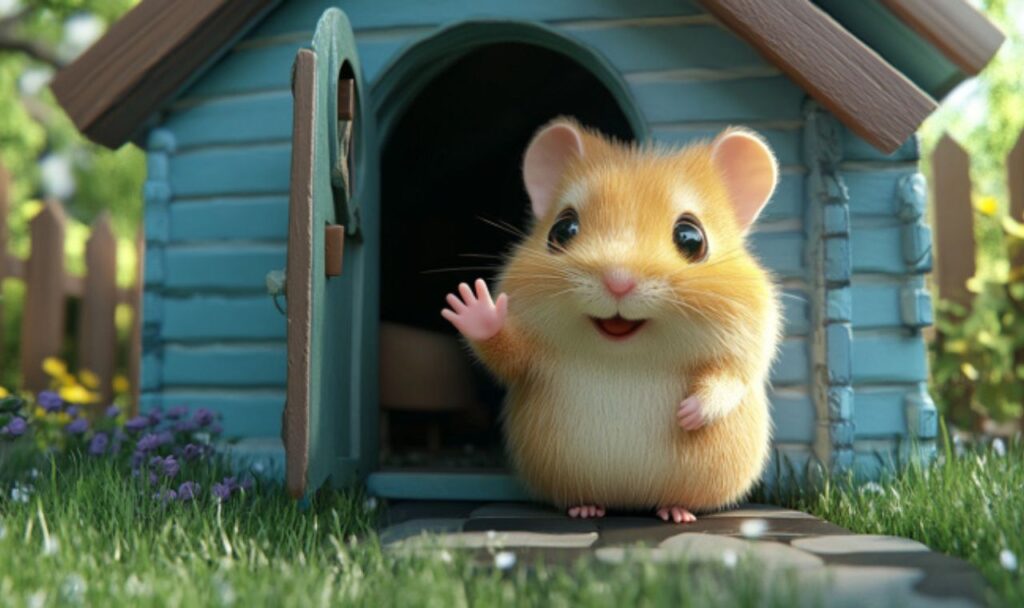
Wrap-Up of Key Takeaways
Clicker training is a powerful tool that allows you to communicate with your hamster in a way that’s clear, positive, and rewarding for both of you. By using the clicker as a signal to mark desired behaviors, you’re creating a system where your hamster can learn through positive reinforcement. This method taps into the psychology of learning and builds on natural hamster behaviors, making it an ideal way to bond with your tiny friend while also providing mental stimulation.
Throughout this guide, we’ve covered all the essentials of getting started with clicker training, from selecting a quiet, hamster-friendly clicker to choosing the right treats that will keep your hamster motivated. We discussed how to “charge” the clicker—introducing your hamster to the idea that the click sound means a treat is coming—and the importance of precise timing to help your hamster understand exactly which behaviors are being rewarded. Then, we delved into teaching basic commands like “Come Here,” “Stand Up,” and “Enter/Exit the Cage,” each designed to make daily interactions with your hamster easier and more enjoyable.
As with any training process, patience and consistency are key. Hamsters have short attention spans, so keeping sessions brief and positive will help them stay engaged without getting overwhelmed. Remember that progress may be gradual, and each hamster learns at its own pace. By ending each session on a positive note and celebrating small wins, you’re creating an experience that your hamster will look forward to—making it more likely to respond eagerly in future sessions.
Encouragement to Start Clicker Training
If you’ve read this far, you’re already well-equipped to start clicker training with your hamster! The thought of training such a small animal may feel daunting at first, but with a bit of persistence, you’ll soon start to see results. Each step in the training process, no matter how small, brings you closer to a stronger bond with your pet. Clicker training is about more than just teaching tricks—it’s a way to enrich your hamster’s life, reduce stress, and open up new opportunities for interaction and fun.
So, gather your clicker, treats, and patience, and take that first step. Whether you’re working on a simple “Come Here” or aiming for more advanced behaviors, every click and treat brings your hamster closer to understanding and trusting you. Remember, training is a journey, and each session, no matter how short, is a moment of connection. Embrace the process, celebrate the little successes, and enjoy watching your hamster’s personality and confidence blossom.
With paws and patience, you’re on the road to being a Hamster Whisperer. Happy training!

